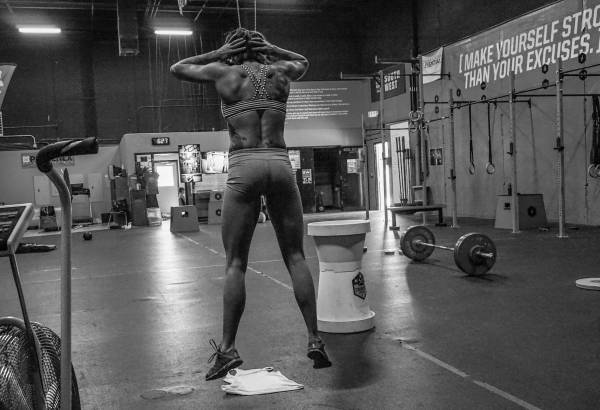Endurance as a term is illusive, misunderstood, inaccurately described, and generally feared and hated by many different gym-rat aficionados. Long slow distance (LSD) then, might just be its dirty-bitch mistress.
Uttered in disgust on and off for the previous few decades, “LSD” is usually repeated in conversations vilifying its use. After which the exoneration of high-intensity interval training (HIIT) will be thrown out much like the sweat thrown from the brow of a southern Baptist preacher at one of those Midwestern “super” churches. His organ player will hit the crescendo and we are all expected to fall from our proverbial wheelchairs as we realise the sin of going too far for too long.
Yes, we have all been told that intensity is our salvation, and that going hard is both the way and the only way to godliness. But this argument of HIIT versus LSD has been waged for the previous century. It’s just now that the same confrontation might be occurring in the organisation that most recently helped popularise the “train till we puke” mentality.
CrossFit’s Message
This has been at least the perception with which myself and many others view CrossFit. When looking back, this shift is fairly easy to see, as far back as the early 2000s the majority of CrossFit’s training championed the benefits of anaerobic training and demonised anything that pertained to long slow distance. There was almost an apologetic feel when prescribing recovery work at an easy pace, backed frequently by statements to detour: “At CrossFit we are only interested in the first two waves of adaptive response (lactate threshold and VO2 max). The third comes at great cost to your overall physical capacity. (Aerobic)
“[W]e have all been told that intensity is our salvation, and that going hard is both the way and the only way to godliness.”
The message became clear, and not just in the worshipping of the anaerobic system, but the specific demonising of its closely regarded cousin. To be fair the era of the “fat burning zone” was at its peak then, and this likely influenced the conception of CrossFit to begin with, having to overwrite the sloths in crowded globo-gyms, naively sweating away on the elliptical while reading The Daily Mail.
With this followers began their embrace of efforts of the short-sucky nature, consuming unquestioningly everything the CrossFit main site recommended. This was in large part because application of intense exercise to off-the-couch populations or perpetual endurance junkies can radically change fitness levels. This change could have been why it looks like CrossFit has correlated endurance training negatively. The downsides pertaining to endurance training are even listed in the CrossFit Level 1 manual. Some apologists of CrossFit now claim indifference to LSD, but this is in total opposition to the basic description of CrossFit often used as a tagline: “Constantly varied, high intensity, functional movement.” A description that for all intents and purposes negates the action of the long and relatively slow.

The Rise of CrossFit Endurance
Whether due to financial motivation or inspired by the natural blend found in military requirements, CrossFit eventually answered the demand by their athletes wanting to participate in endurance events. Their answer was a controversial methodology headed by Brian MacKenzie in what is now known as CrossFit Endurance. Much like the endurance community’s battle of appealing to the “time-crunched” by the likes of cyclist and triathlete Chris Carmichael, the goal for CrossFit was to appeal to those with an ADD sporting mentality. “Don’t go longer, just go faster.” For the majority of recreational athletes this model works well. The problem lies in believing you can replace distance with intensity in world-class athletic preparation.
The CrossFit Games: A New Story
Enter the CrossFit Games. A few years ago we saw the emergence and need to develop the aerobic system to a higher level as the Games introduced a version of a sprint distance triathlon and then subsequently the half marathon row. Each year they upped the ante, coming closer to what some might actually consider a test of endurance.
“It seems from a marketing standpoint, that CrossFit, Inc. specifically denotes no difference in the training and preparation for life and the training and preparation for sport.”
This year we saw a forty-plus-minute ocean event, and a forty-plus-minute “Murph” variation executed in blistering heat. The tests are still well under the ninety minute mark – the usual marker for endurance as an energy system, as the aerobic system must be aided by additional hydration and glycogen – but the inclusion of longer events, more frequently brings the aerobic system into center focus, and puts this problem in front of many of the sports’ best.
Jason Khalipa famously employed the help of Chris Hinshaw, a former Ironman championship podium-finisher and all-around knowledgeable endurance coach. Aside from enabling Jason the ability to win a few of the “endurance” events as one of the more muscular and heavier athletes, Hinshaw has gone on to work with a large number of games competitors. In a recent interview, he spoke about his methodology and the successes he has had through the use of LSD and the building of the aerobic system in even four-time champion Rich Froning, a statement that went a little under the radar, especially considering CrossFit’s relationship with endurance training.

A Difference in Degree?
This conflict leads to another question – whether or not the sport and the methodology are different? It seems from a marketing standpoint, that CrossFit, Inc. specifically denotes no difference in the training and preparation for life and the training and preparation for sport. As they have mentioned multiple times in the idioms of Greg Glassman, “Your needs and the Olympic athlete’s differ by degree not kind.”
“Fitness evangelism is the death of progress. Those who know this will sit silently by in contempt of their peers as they feel the overwhelming power of belief dissuade others from truth.”
This philosophy would actually all but excuse the use of LSD training had not CrossFit spent the first decade of their existence disparaging its use. How and what will happen when this trend at the top level reaches other spectrums of CrossFit participants? My guess is that it will be a very positive thing. In part because of my love of the sport of CrossFit, my hope for its development, and because we have seen similar evolutions in CrossFit’s past.
When CrossFIt increased the frequency of heavy Olympic lifts, the need to develop the associated strength, coordination, and speed heavily influenced what pretty much any person and/or gym associated with the brand did concerning programming. This move increased the number of top-end Olympic weightlifting athletes and coaches involved in CrossFit, as well. It was so influential that it reinvigorated the weightlifting shoe industry and revived what looked to be a dying sport. Now most programs for even the everyday CrossFit participant piggyback weightlifting-specific programs with some added conditioning. What occurred at the top level affected those not only at the middle, but those who were just starting in the sport.
Change Is Coming
If Hinshaw’s success is any indication, then we should expect to see an explosion of endurance methodology being integrated into not only the training of the top athletes and their respective followers, but also showing up on the CrossFit main site. Like everything before it, the programming will be overdone at first. I imagine the best in the sport will set precedence by posting training metrics that others will try to match. In them doing so, we will see what we experienced with the Olympic lifts in CF, as we saw with a social media fueled snatch competition between high level games athletes prior to the Games. But eventually, the additional time spent developing the lift took away other abilities and the “arms race” neutralized as the athletes experienced a point of diminishing returns, which appeared to be just over the 135 kilo mark with the snatch.
“Admitting that something works at the highest level will surely influence what happens at the lowest.”
Change is upon those who follow the sport and the basic practice of CrossFit. It is seen even with hardline advocates of the short and the intense like Brian MacKenzie. I reached out to Brian to get his thoughts on the evolution of endurance training in CrossFit. I was mostly curious about a recent interview he had done with Barbell Shrugged, in which he described finding problems with the aerobic capacity in athletes. This can be seen as fluctuations in heart rate during a staged ramp test or a prolonged efficiency test. This is known to the endurance world as cardiac drift, for which the fix is the addition of volume or more LSD.
Brian has not reformed completely, as he and I both agree the application needs context. But he is recognizing the need for a more developed aerobic ability and the benefits that go along with it, especially at the level of athletes in the Games. The amount of skill work involved with those he coaches does, in fact, add up to a similar pattern we see when applying LSD to elite training – 70-80% of training volume will be less than 80% effort. This rule of thumb becomes very supportive of the intense effort required for greater fitness and happens to be very well researched.

End Fitness Evangelism
It seems now that the fight shouldn’t be what CrossFit is or what it isn’t, or what they have said and what was once believed. What it should be is what works and what doesn’t. Admitting that something works at the highest level will surely influence what happens at the lowest.
As Brian candidly proposed, the problem lies in choosing a side, in being a true believer, in not being open to ideas. Fitness evangelism is the death of progress. Those who know this will sit silently by in contempt of their peers as they feel the overwhelming power of belief dissuade others from truth.
We are all here for the same reason, to experience performance or an exhibition of it. The difference is in distilling the magic, in accounting for the differences between speaking in tongues, the proselytising by faith, and that of a reality-based approach that uses logic, not belief, to enhance a training effect.
More Like This:
- Run Further, But Hurt Less?
- Steady State Cardio Is Not Dumb (If You Do It Right)
- Impact Forces, Lazy Feet, and How Shoes Can Lead to Injury
- New on Pulse Beat Fit UK Today
References:
1. Seiler, S. and Tonnesson, E. “Intervals, Thresholds, and Long Slow Distance: The Role of Intensity and Duration in Endurance Training.” Sportscience, 13, 32-53. 2009.
Photo 1 courtesy of Robert Gonda (Athlete: Danielle Lee).
All other photos courtesy of Michael Blevins.






